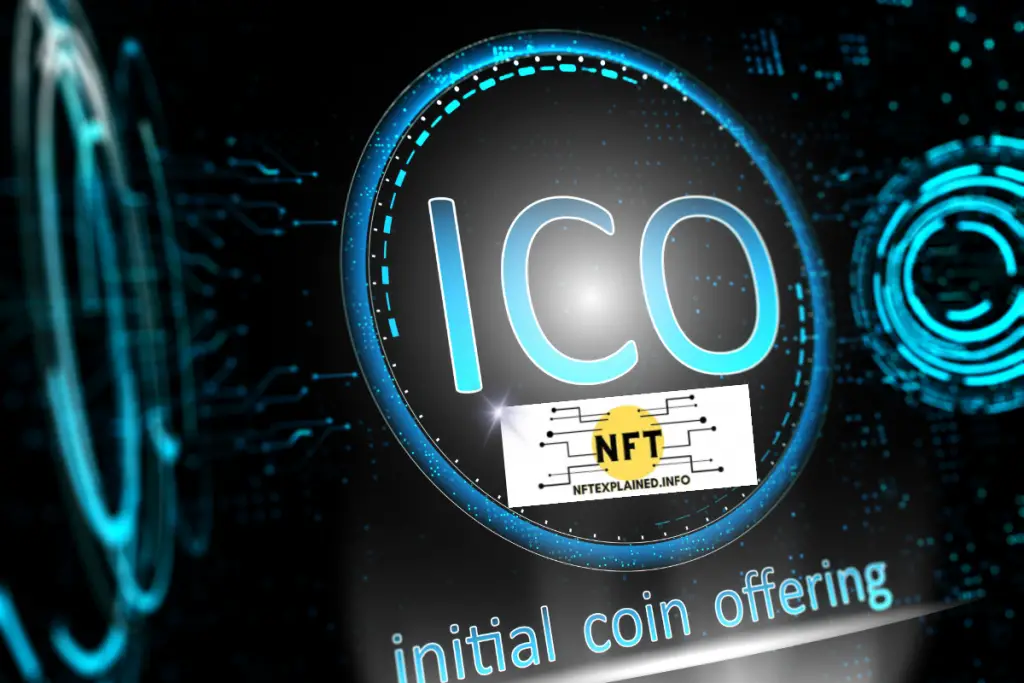
Initial coin offerings (ICO) and initial public offerings (IPO) are two terms that are commonly intermingled because they serve as unique ways to raise capital; however, there are a few key differences – which we will get into.
So, what is the purpose of an initial coin offering?
An initial coin offering is a way for a firm – typically blockchain related – to raise funds directly from those interested in purchasing the newly minted cryptocoin. An ICO occurs when a digital token is exchanged for fiat (or cryptocurrencies) so that the founding team can pursue the project’s goals.
ICOs can give buyers equity and/or access to utility. The fact that some ICOs serve as a way for investors to receive only utility (e.g. perks, access to real world events, and more) and not equity, is one of the core differences that ICO have compared to an IPO. An IPO definitively gives the investor stock (i.e. equity) in the company.
Another unique aspect that defines an ICO is that the buying of the tokens are directly from the founding team and not from a brokerage or third party intermediary. Additionally, ICOs typically have little regulatory oversight whereas IPOs are carefully watched by government-controlled entities – in the US, this is the purview of the Securities and Exchange Commission (SEC).
When a firm is looking to ICO, they will almost always release a white paper (or roadmap) that will thoroughly detail what the founding team plans to do with the funding generated by this first-ever token sale. The whitepaper will also include key information like the amount the founding team perceives is needed to reach their goal(s) and a timeline for this process.
What Is The Difference Between An ICO And An IPO?
An ICO and IPO are both ways for companies to raise capital. The core difference is that ICO can give the buyer utility (i.e. access to a product or service) and/or equity in the project. IPO definitely gives investors equity. Other differences include investor access, regulations, and risk/return.
By investors’ access, we are referring to the type of people/investors who are eligible to participate in the purchasing of a token or stock. ICO are typically available to any and all investors who want to purchase the token, whereas IPO are typically available only for institutions like hedge funds or high net worth individuals. IPO buyers typically need to meet specific financial criteria to participate in the IPO.
Regulations are something our team has already touched on so we won’t expand on this aspect too much more. We should note that ICOs are prohibited in specific countries like China. Additionally, there are already published guidelines in countries like New Zealand, United Arab Emirates, and Hong Kong. That being said, many countries are in the process of creating governing guidelines.
An important guideline to note is that if an ICO, within the U.S., does not pass the Howey Test, which is a four part test to determine if a transaction is deemed an investment or security, the ICO may not be subject to the same regulatory requirements as typical securities offerings.
It could also potentially be possible for an ICO to be illegal if the team does not comply with regulations regarding consumer protection laws, including anti-money laundering edicts. These laws are being expanded into covering crypto assets in many countries.
Another core difference between an ICO and IPO is the additional risk and higher return that investors typically expect when purchasing tokens rather than stock. With an ICO, the team and financial records may not be as easily accessible – meaning the track record isn’t as long or as detailed – compared to the company that is having an IPO. With an IPO, the company typically delivers materially more information to investors (e.g. previous financials, history about the management team, and a proven business model that the company is using to make money).
With an ICO, the stage at which the team is looking to raise funds could be any point – including the more risky, beginning stages. ICO are typically more risky in nature as not all projects that offer an ICO succeed.
All things considered, an ICO typically provides the potential for higher upsides as the investment is more risky; with an IPO, while the upside can be high, it’s likely to take much longer as the risk is likely less compared to most ICOs. One reason for this, is because ICO companies can potentially outright fail; this is because many companies that offer an ICO do not have a working product or proven business model at the time of the offering. Our team can not stress enough the importance of doing thorough due diligence including reading the whitepaper before investing in an ICO.
How Are ICOs Structured?
ICOs can be structured in two core ways; private – where only a limited number of approved investors can partake, and public – where any and all people are able to partake. Within those two core ways, ICOs can differ by having a predetermined/dynamic number of tokens available at a set/dynamic price.
With a private ICO, funds are typically raised by institutional investors (i.e. venture capital firms and hedge funds). Additionally, with private ICO, a select group of individuals are being targeted to purchase the coin and oftentimes these more sophisticated investors have the opportunity to provide guidance to the team by sitting on the board. With a private ICO, potential drawbacks include less public or transparent information about the funding and potentially higher challenges in finding people who are willing to invest in the project.
With a public ICO, the ability to raise funds in what could potentially be considered a crowdsourced way, can be highly effective and efficient. This is because public ICO targets any individual who believes in the project, without having any fiscal requirements that need to be met. Public ICOs also allow the founding team to raise capital without the need for an intermediary like a brokerage or bank.
More often than not, private ICOs will typically be held with a static supply and static price, as the founding team will have a specific funding number in mind. This set number is likely the amount that is needed to help the founding team produce the product or service in mind.
With public ICOs, there is also the potential for a static supply and static price to be set; however, teams will often have a static supply but a dynamic price. With a dynamic price, the amount being raised would depend on the price of each token. Another alternative is a dynamic supply and a static price.
What Are The Rewards/Risk Of Investing In An ICO?
Investing in an ICO poses the potential for high returns as tokens can greatly appreciate in price – if the project is successful; with that comes high risk as it’s possible the project fails. Investing in an ICO, can result in access to utility (e.g. the service being created) or equity in the project.
What Are Some Examples Of ICOs?
Ethereum successfully had an ICO, which was facilitated via a smart contract; a total of US$17.3 million was raised. In contrast, an unsuccessful ICO was Telegram’s where the firm raised a total of US$1.7 billion but was fined US$18.5 million by the SEC and ultimately was forced to return US$1.2 billion to investors.
Ethereum’s ICO took place back in 2014, where purchasers were able to exchange Bitcoin for Ethereum. This was facilitated by a smart contract, which many would consider to be very similar to a crowdfund, as there was no limit on the amount of Bitcoin that could be exchanged for Ethereum.
Another example of an ICO is Telegram, however the company faced regulatory scrutiny as the SEC deemed Telegram to have released a token – “Grams” – that violated federal securities laws. More on the topic can be found here.
We hope you are just as excited as we are about this space and continue to stay informed at NFTexplained.info. To get the latest news in this rapidly evolving space, subscribe to our YouTube channel! Also consider following our team on Instagram & Twitter!
If you would like to support our team’s content creation please consider doing business with our partners: Trade stocks & crypto on Webull – get 2 free stocks! Buy a Ledger hardware wallet! US-based traders can get a crypto trading discount on Binance!

